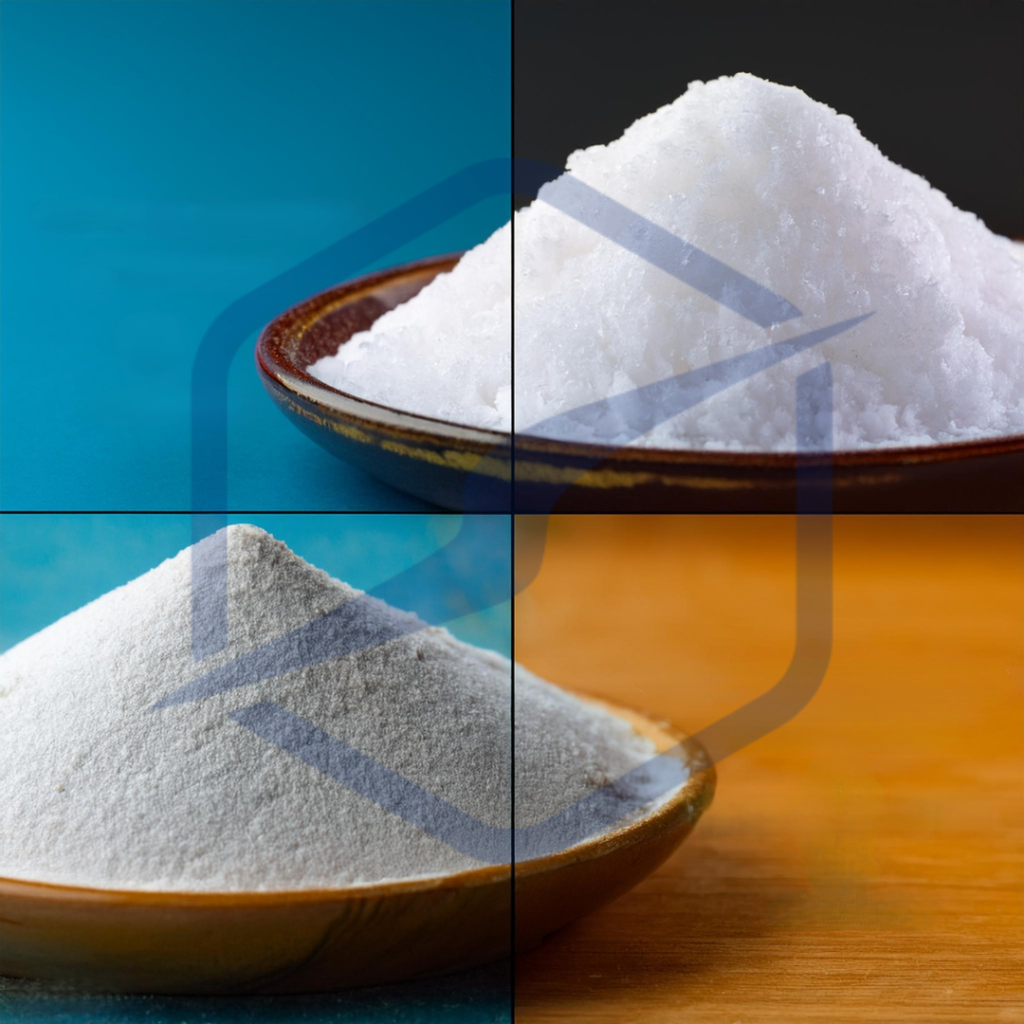
Caustic Soda vs. Soda Ash: Choosing the Right Chemical for Your Process
When selecting chemicals for industrial processes, understanding the differences between caustic soda (sodium hydroxide) and soda ash (sodium carbonate) is crucial. Both are valuable in various applications, but they have distinct properties and uses. Here’s a comparison to help you choose the right chemical for your needs:
- Chemical Properties:
- Caustic Soda (Sodium Hydroxide)
- Form: Typically available as solid pellets, flakes, or in liquid form.
- PH: Highly alkaline, with a pH of around 14.
- Reactivity: Highly reactive and can cause severe burns. It reacts strongly with acids and moisture.
- Soda Ash (Sodium Carbonate)
- Form: Usually found as a white, granular powder or in liquid solutions.
- PH: Alkaline, but less so than caustic soda, with a pH around 11-12.
- Reactivity: Less reactive compared to caustic soda and generally safer to handle.
- Primary Uses:
- Caustic Soda
- Manufacturing: Used in the production of paper, textiles, and aluminum.
- Cleaning: Effective in heavy-duty cleaning and degreasing applications.
- Chemical Production: Essential in the production of various chemicals and pharmaceuticals.
- Water Treatment: Helps in pH adjustment and neutralizing acidic waters.
- Soda Ash
- Glass Production: Major component in manufacturing glass and ceramics.
- Water Treatment: Used for softening water and adjusting pH levels.
- Detergents: Found in household and industrial detergents for its cleaning properties.
- Chemical Manufacturing: Involved in producing chemicals like sodium bicarbonate.
- Handling and Safety:
- Caustic Soda
- Precautions: Requires careful handling with protective gear due to its corrosive nature. Use in well-ventilated areas and follow stringent safety protocols.
- Precautions: Requires careful handling with protective gear due to its corrosive nature. Use in well-ventilated areas and follow stringent safety protocols.
- Soda Ash
- Precautions: Generally safer to handle but still requires basic protective equipment to avoid irritation. Store in a dry place to prevent clumping.
- Precautions: Generally safer to handle but still requires basic protective equipment to avoid irritation. Store in a dry place to prevent clumping.
- Environmental Impact:
- Caustic Soda: Can be hazardous if not managed properly, with potential environmental impacts if spilled or improperly disposed of.
- Soda Ash: Less environmentally damaging, but still requires proper handling and disposal to avoid contamination.
Conclusion: Choosing between caustic soda and soda ash depends on your specific process requirements. Caustic soda is ideal for highly alkaline processes and industrial applications requiring strong chemical reactions. Soda ash is suitable for applications like glass manufacturing and water treatment where a milder alkaline solution is sufficient. Understanding these differences will help you select the most appropriate chemical for your process, ensuring efficiency and safety in your operations.
Summary:
Caustic Soda vs. Soda Ash
Caustic Soda
- Properties: Highly alkaline, very reactive.
- Uses: Paper, textiles, cleaning, chemicals, water treatment.
- Safety: Requires protective gear due to corrosiveness.
Soda Ash
- Properties: Less alkaline, less reactive.
- Uses: Glass, water softening, detergents, chemicals.
- Safety: Safer to handle, basic protective equipment recommended.
Conclusion: Use caustic soda for strong alkaline needs and soda ash for milder applications.
Did you enjoy this article? Check out more posts on our blog!
Want to Know More About Our Products/Company?
Question
Ask us for a free consultation!
Get in Touch
info@shafaqchemi.com management@shafaqchemi.com sales@shafaqchemi.com
+971504290705
+971503201725
Discover Excellence with Shafaq Chemi
For more information about our company, please contact us via WhatsApp or email.” We are dedicated to serve you with ‘Quality & Integrity.’
For more information about our company, please contact us via
WhatsApp or email.” We are dedicated to serve you with ‘Quality & Integrity.’



